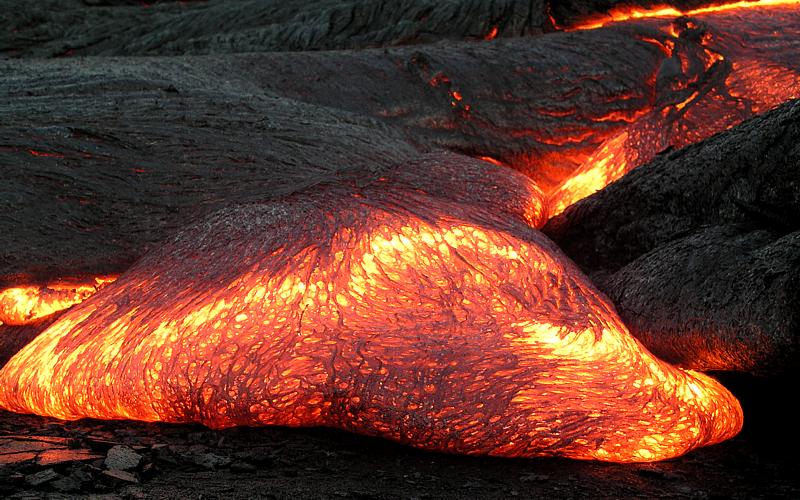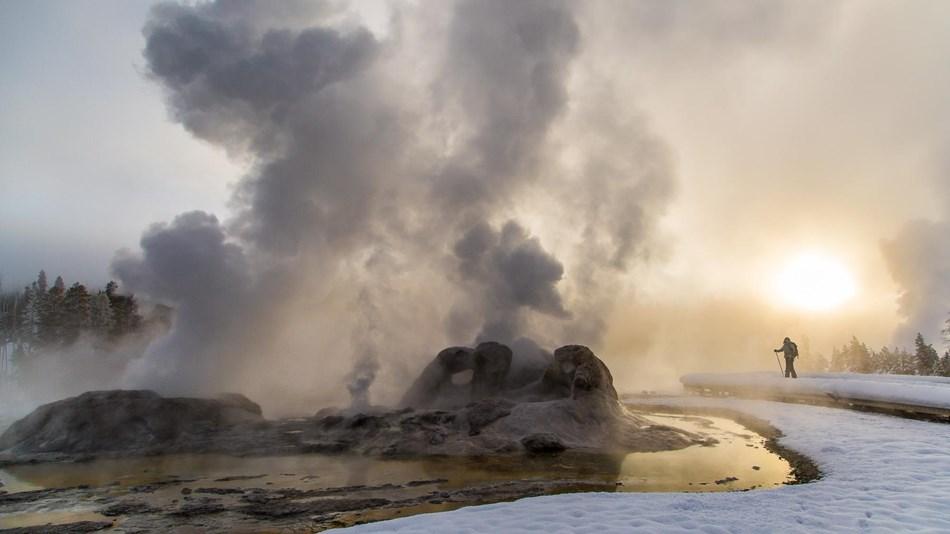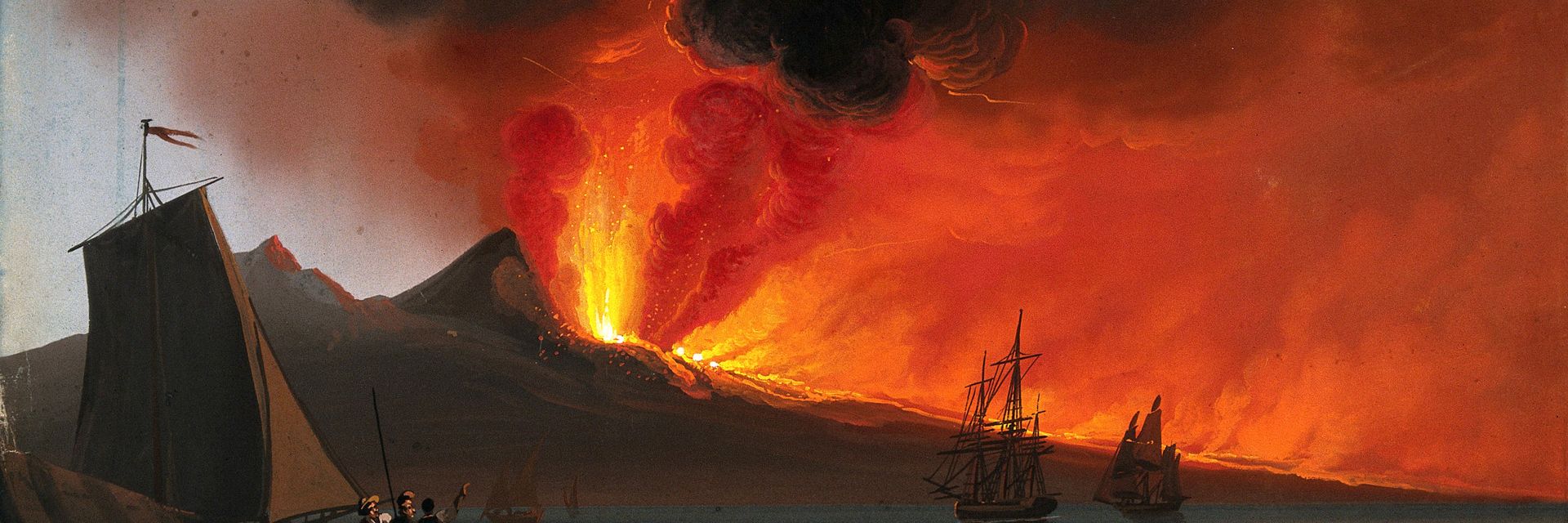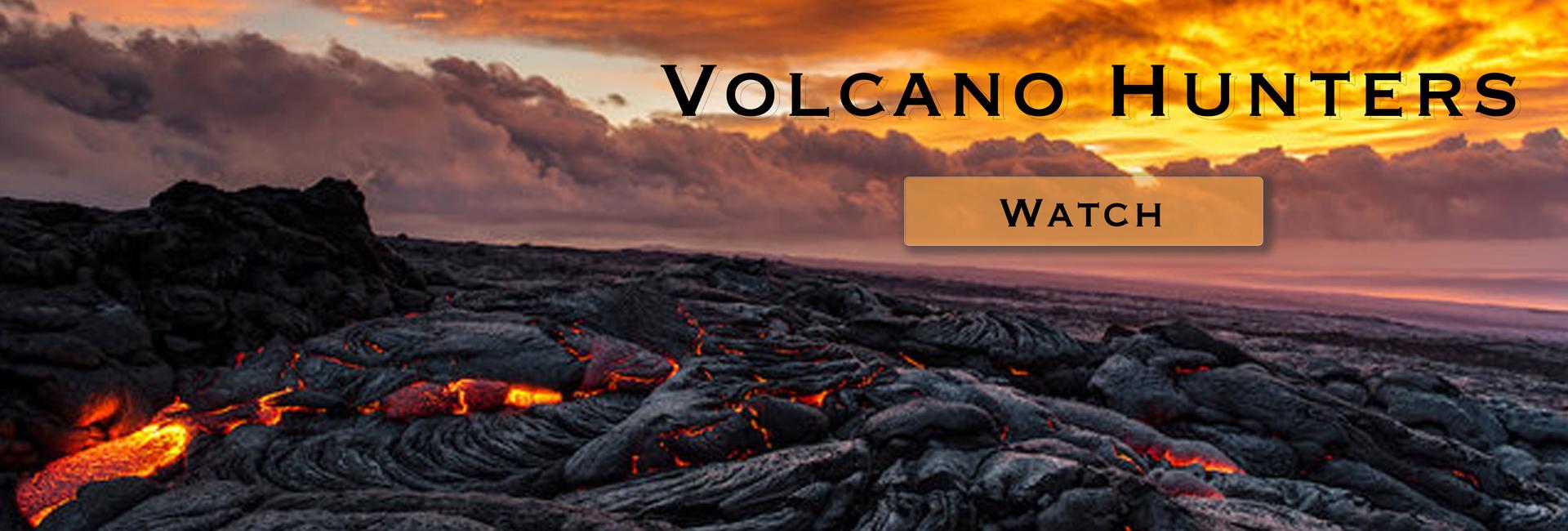One of the most violent and destructive of all natural processes on Earth, volcanoes are truly a blast from the past. “Blast” because of the power and explosiveness of volcanoes – and “past” because what volcanoes kick up comes from deep in the planet’s interior and connects us with primal processes that have been present on Earth virtually since its beginning tens of billions of years ago.
◊
Can we count all the active volcanoes on the planet? Well, not down to the last volcanic vent, but we do know how many volcanoes are currently mapped and tracked – a whopping 1,500, give or take, according to the U.S. Geological Survey (USGS). But that number comes with two provisos.
First, though the USGS’s estimated 1,500 are considered active as opposed to “extinct,” only about a third of them have erupted in the past 10,000 years or so. Of course, it might seem that 500 volcanoes actually erupting over 10 millennia may not seem like a large number, consider how destructive any single volcanic eruption can be: When Indonesia’s Mount Tambora blew its stack in 1815, it changed the Earth’s weather patterns for more than a year. And the massive ancient volcano that erupted in an area called the Siberian Traps around 250 million years ago caused a worldwide extinction event that lasted over a million years.
The second thing to consider is that the count of 1,500, which includes both land and underwater volcanoes, excludes the enormous belt of contiguous, continually erupting volcanoes that exists under the Pacific Ocean. Scientists say there might be as many as a million individual tubes of lava erupting underwater. The belt marks out a semicircular arc that more or less defines the shape of the Pacific Ocean and is part of what we refer to as the Pacific “Ring of Fire.” The Ring, also called the circum-Pacific belt, contains 75 percent of all the volcanic activity on Earth, both underwater and above ground.
Plate tectonics – the continuous movement of vast areas of land and sea over huge spans of time – are overwhelmingly responsible for most volcanic activity on Earth, and cause the roiling undersea movements of the Pacific Ring of Fire.
The eruption of a volcano on the surface of our globe releases huge quantities of poison gases from deep underground into the atmosphere. This heavy cloud formed from rock and ash is deadly; mixed with lava created by magma pushing from below the Earth’s crust, it contains poisonous mercury, not to mention carbon dioxide and sulfuric acid. It can easily kill any life, plant and animal, with which it comes into contact.
Tectonics: How Plates Move
The Pacific Ocean, comprising both the North and the South Pacific, is the world’s largest body of water, taking up about one-third of the Earth’s surface. How did it become so large? Well, our planet, despite how it may feel on any given day, is not an unchanging ball of water, soil, and rock. It’s actually always on the move, and in many directions, both convergent and divergent.
It’s been that way almost since Earth formed. Right around 1.5 million years after it first coalesced out of floating rocks and space-dust, planet-spanning “plates” of rock began slowly moving, shaping our continents, pushing and pulling in multiple directions that sometimes came into direct conflict with each other. Some of these massive collisions created subduction zones, where one plate pushed relentlessly under another. Others, called spreading centers, literally cracked the surface of the Earth. Naturally, both phenomena caused violent shaking and quaking of the planet.
For several epochs of its early life, the solid (non-oceanic) surfaces of the Earth were all conjoined. We call this ancient landmass Pangaea, and for a time – about 170 million years – all our continents were one. Over the following 160 million years (from then to now), planetary forces pushed the masses of Pangaea apart. Plates are still on the move today, about one or two inches per year.
These movements, on a planet-wide scale, caused the current configuration of Earth’s solid and water-covered spaces, including the Pacific Ocean. Plate tectonics are responsible for the ocean’s basin, and for the characteristics of the ocean bed. The seafloor is broken into planes, elevated areas, and many underwater mountain ranges that appear where plates rub against each other and cause the ranges to form. These mountainous subsurface formations include many volcanoes.
At the northern tip of the Pacific Basin, where the Aleutian Islands seem to reach out to nearly touch the Siberian Peninsula, lies an extremely active crescent of active volcanoes. The arc spreads from the north in both easterly (West Coast of North and South America) and westerly (China, Japan, Indonesia) directions, fanning out toward the southern reaches of the Ring of Fire. The documentary series Volcano Hunters sheds light on the extent of the Pacific Ring.
Near the middle of this arc lies a ridge of volcanic mountains that formed a chain of islands called Hawai‘i.
Volcanoes Create U.S. Island State of Hawai‘i
The U.S.’s 50th state includes eight major islands and scores of smaller ones. Collectively they form a mostly underwater archipelago that spans nearly 400 miles, from the most westerly part of Ni‘ihau to the southeast extremity of the Big Island, a/k/a the island of Hawai‘i.
The archipelago actually marks one of the largest stress faults in the Pacific, as it is formed by the movement of plates that form the ocean floor. Above the floor rise a series of underwater mountains, a ridge that tracks how the plates have moved, over time, to allow these structures to rise up through the surface of the ocean. The oldest volcanoes of the ridge are those at the western tip of the island chain, and the newest – and certainly most active – are on the eastern side of the Big Island, the youngest of them.
From oldest to youngest (and west to east), the eight major Hawaiian islands are Ni‘ihau, Kaua‘i, O‘ahu, Moloka‘i, Lana‘i, Kaho‘olawe, Maui, and Hawai‘i (or the Big Island).
Hawai‘i’s volcanic islands support over a hundred lava spouts and volcanoes both small and large, extinct and active. On the Big Island there are five major volcanoes that together have created Hawai‘i’s largest land mass above the ocean surface. Each volcano created a distinct region of the island: Kohala (northwest), Hualalai (west), Mauna Kea (north), Mauna Loa (south), and Kilauea (southeast), the youngest and most active volcano on the island.

Magma flow from Kilauea volcano in Hawai'i (Source: Hawai'i Volcano Observatory, by Deglr6238, Public Domain, via Wikimedia Creative Commons)
Kilauea is also, perhaps, the most famous of the volcanoes, and has been in a continual state of activity since 1983. It sends lava and ash down its slopes into the Pacific Ocean, damaging and destroying dwellings and natural features along the way, but also adding to the island’s land mass as the lava cools and hardens into a solid but rocky plain.
Kilauea is of a type called a shield volcano. This means that it is formed primarily from fluid lava vents, and takes up a lot of area compared with its height. The other main types of volcanoes are the cone, or cinder cone volcano, which rises very high and tapers up into a conical shape; and the composite, or stratovolcano, which is similar to the cone volcano but with layers of rock in addition to layers of solid lava.
The Slow Rise of Yellowstone’s Supervolcano
Kilauea is a prime example of an active shield volcano slowly but irresistibly creating new land as its lava flow spills into the ocean and hardens. In another part of the U.S. lies a currently inactive volcano that, if it were erupting, would dwarf the much smaller Hawaiian shield volcano in its explosive destructiveness. This is the supervolcano that lies under an enormous caldera located in a huge section of Yellowstone National Park in Wyoming.
A caldera is a large volcanic crater that is usually located at the center of a past eruption. It is formed when the mouth of a volcanic cone collapses and leaves behind a relatively shallow internal depression. Active, dormant, and extinct volcanoes can all have calderas.
The Yellowstone Caldera, as it’s known, surpasses all other U.S. volcanic systems in size by a large margin. Although it has not erupted in many thousands of years, it’s not extinct. If it should erupt again, this supervolcano would most likely have a long-term negative impact not only on its geographical region but also on weather systems, cooling and drying the atmosphere and causing significant die-offs among both animals and plants.

Yellowstone's Grotto Geyser (Source: Neal Herbert, National Park Service, Public Domain, via U.S. Department of Interior)
A supervolcano eruption would most likely be felt as a series of explosions followed by temblors that would be very destructive to the area of the eruption as well as areas hundreds of miles away. The resulting damage to a broad swath of the planet – and to life on it – could be felt for hundreds of years, depending on the impact and extent of the supervolcano’s blast area.
According to online news site Vox, the potential impact of a Yellowstone Caldera eruption would be felt in many unexpected ways:
[If] we did get a super-eruption . . . [the] main damage would come from volcanic ash – a combination of splintered rock and glass – that was ejected miles into the air and scattered around the country. . . . A super-eruption could conceivably bury the northern Rockies in three feet of ash – devastating large swaths of Wyoming, Idaho, Colorado, Montana, and Utah. . . . A volcanic eruption that big would also have major effects on the global climate. Volcanoes can emit sulfur aerosols that reflect sunlight back into the atmosphere [and] cool the climate. These particles are short-lived . . . [but] can still be dramatic.
Is it too late to say, “Don’t worry”? That might seem facile, but let’s take a look at the Yellowstone Caldera’s history of eruptions. The earliest volcanic event we know of took place in Yellowstone about 2.1 million years ago, and it was so powerful that it created a caldera housing a sea of magma and blew a hole in the earth bigger than the state of Rhode Island. The second extremely violent eruption happened about 1.3 million years ago. And the most recent caldera-forming blast exploded around 630,000 years ago.
There is no evidence we’re about to have another episode of volcanism in Yellowstone, and certainly no reason to think any potential temblors would reach the magnitude of the three giant explosions discussed above. So, it’s OK to plan a trip to Yellowstone with your family without fear of the ground giving way and lava skyrocketing into the the atmosphere. You can probably get by with a good pair of hiking boots, and maybe a kerchief.
Volcanoes on Earth: Toward a Peaceful Coexistence
We’ve taken a look at some of the most powerful – and destructive – volcanoes from millions, even billions of years ago to contemporary times. They reveal an ineluctable force of nature that continually shapes the planet, and they exist beyond our control. The best we can hope for is that volcanologists advance the science of volcano prediction to the point that – at best – lives are saved in major eruptions.
The other possibility, however unlikely, involves a miscalculation about the prospects for a Yellowstone Caldera-magnitude eruption somewhere in the world. And that would spell a dire future for all living things on our fragile planet.
Ω
Kevin Martin is Senior Writer for MagellanTV. He writes on a wide variety of topics, including outer space, the fine arts, and modern history. He has had a long career as a journalist and communications specialist with both nonprofit and for-profit organizations. He resides in Glendale, California.
Title image: Italy: Volcano erupting in the background. (Credit: Fæ, via Wikimedia Commons)


